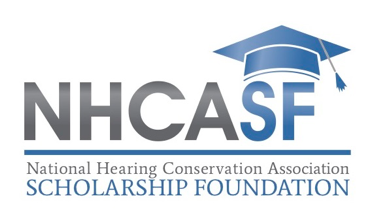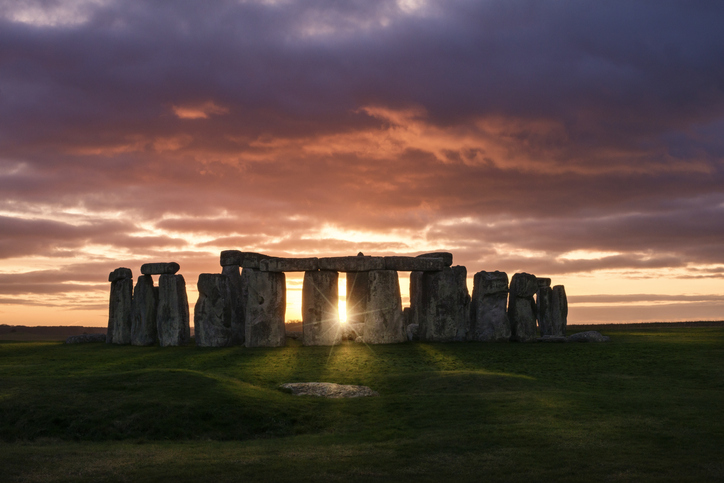|
|
Scholarship Foundation Board Opening
Posted: February 2, 2022

The National Hearing Conservation Scholarship Foundation (NHCASF) is seeking volunteers interested in serving on the Board. The term of office is three years. The mission of the NHCASF is to manage endowments and donations, and award scholarships to graduate students focusing on applied/practical studies in hearing loss prevention/hearing conservation. Serving on the Foundation Board is an excellent opportunity to promote NHCA and to encourage students interested in the field. Any NHCA voting member who is interested should contact Lynnette Bardolf, President, [email protected]. |
|
Seeking E-News Editor
Posted: February 2, 2022
 Do you enjoy keeping an ear out for professional news and being “in the know” with your Association? You could be the next E-News Editor! We're looking for a volunteer to coordinate with the publication and website committees to curate our monthly electronic compilation of NHCA news, events, and developments in hearing loss prevention/sound appreciation. To learn more, please contact Elizabeth Masterson, Director of Communications, at [email protected]. Do you enjoy keeping an ear out for professional news and being “in the know” with your Association? You could be the next E-News Editor! We're looking for a volunteer to coordinate with the publication and website committees to curate our monthly electronic compilation of NHCA news, events, and developments in hearing loss prevention/sound appreciation. To learn more, please contact Elizabeth Masterson, Director of Communications, at [email protected]. |
Hearing Research – Current Insights
Posted: February 2, 2022
- Noise was one of the first hazards NIOSH addressed when the Institute was established in 1971. A dedicated Noise Section was established to
 conduct field studies of noise exposure, design engineering controls, test hearing protection devices, evaluate the effectiveness of hearing loss prevention programs, develop standards, and advise government and non-government entities on occupational noise-related policy. As NIOSH celebrates its 50th anniversary, the NIOSH Hearing Loss Prevention Research Program looks back over 50 years of research and recommendations for preventing work-related hearing loss. conduct field studies of noise exposure, design engineering controls, test hearing protection devices, evaluate the effectiveness of hearing loss prevention programs, develop standards, and advise government and non-government entities on occupational noise-related policy. As NIOSH celebrates its 50th anniversary, the NIOSH Hearing Loss Prevention Research Program looks back over 50 years of research and recommendations for preventing work-related hearing loss.
NIOSH Noise: A 50-Year Timeline of Research and Intervention. Blog posted January 19, 2022 by Christa L. Themann, MA, CCC-A; Julie Tisdale-Pardi, MA; CAPT Chucri (Chuck) A. Kardous, MS, PE; Elizabeth A. Masterson, PhD, CPH, COHC; Thais C. Morata, PhD; and CAPT William J. Murphy, Ph.D.
- To address the burden of global hearing loss, WHO has identified a compendium of key evidence-based ear and hearing care interventions to be included within a country’s universal health coverage packages. To assess the cost-effectiveness of these interventions and their budgetary effect for countries, WHO analyzed the investment required to scale up services from baseline to recommended levels, and the return to society for every US dollar invested in the interventions.
Tordrup, et al.(2022). Global return on investment and cost-effectiveness of WHO's HEAR interventions for hearing loss: a modeling study. Lancet Glob Health 10(1): e52-e62.doi: 10.1016/S2214-109X(21)00447-2.
- The prevalence of hearing loss in the Department of Defense continues to decrease for service members and civilians enrolled in hearing conservation programs, according to a recent report from the Defense Health Agency Hearing Center of Excellence. According to Dr. Theresa Schulz, HCE prevention section chief, data show the number of hearing-impaired service members fell from 18% in 2013 to 15% in 2020. Report findings also reveal the percent of noise-exposed civilians with hearing impairment continues to show a gradual decrease from about 46% in 2013 to 39% in fiscal year 2020.
The Military is Reporting Far Fewer Hearing Problems. Blog posted December 14, 2021 on www.Health.mil by Larine Barr, Hearing Center of Excellence. |
|
Sound Postcard
Posted February 2, 2022
This month we turn our ear to the (very) distant past. Archeologists have long been fascinated by England’s famous Stonehenge Circle and similar stone structures – how they were built, how they were used, their deeper meaning and significance to ancient societies. Now scientists are analyzing the acoustics of these structures to better understand what early cultures would have experienced. Acoustic engineers at the University of Salford built a complete 1:12 scale model of Stonehenge using computer-aided design techniques and then tested the model in a sound laboratory, similar to modeling tests of concert halls and opera houses. Their studies suggested that four thousand years ago, the strong reverberations of musical instruments such as drums and horns would have been amplified when played in the monument’s inner sanctum, but these sounds would have been less audible to anyone outside the circle. To learn more: Journal of Archaeological Science. structures – how they were built, how they were used, their deeper meaning and significance to ancient societies. Now scientists are analyzing the acoustics of these structures to better understand what early cultures would have experienced. Acoustic engineers at the University of Salford built a complete 1:12 scale model of Stonehenge using computer-aided design techniques and then tested the model in a sound laboratory, similar to modeling tests of concert halls and opera houses. Their studies suggested that four thousand years ago, the strong reverberations of musical instruments such as drums and horns would have been amplified when played in the monument’s inner sanctum, but these sounds would have been less audible to anyone outside the circle. To learn more: Journal of Archaeological Science. |
New NHCA/CAOHC Webinar – Professional Supervisor Panel Discussion
Posted: January 12, 2022
NHCA is excited to partner again with CAOHC in 2022 offering high-level webinars on hot topics presented by top-notch speakers; plus added value CEUs! Our latest offering provides an in-depth discussion of the Professional Supervisor as a key member of the hearing conservation team. This presentation brings experienced Professional Supervisors from across the United States together to discuss the roles, responsibilities, scope of practice, and practice requirements across a variety of hearing conservation programs and regulatory agencies. NHCA members pay a reduced rate. CEUs! Our latest offering provides an in-depth discussion of the Professional Supervisor as a key member of the hearing conservation team. This presentation brings experienced Professional Supervisors from across the United States together to discuss the roles, responsibilities, scope of practice, and practice requirements across a variety of hearing conservation programs and regulatory agencies. NHCA members pay a reduced rate.
- When: January 20, 2022 at 2:00-3:00 pm EST
- Presenters: LTC J. Andrew Merkley, AuD CCC-A CPS/A and Theresa H. Small, AuD CPS/A
- To register: click here
|
|
|
|
|
<< first < Prev 11 12 13 14 15 16 17 18 19 20 Next > last >>
|
|
Page 16 of 48 |